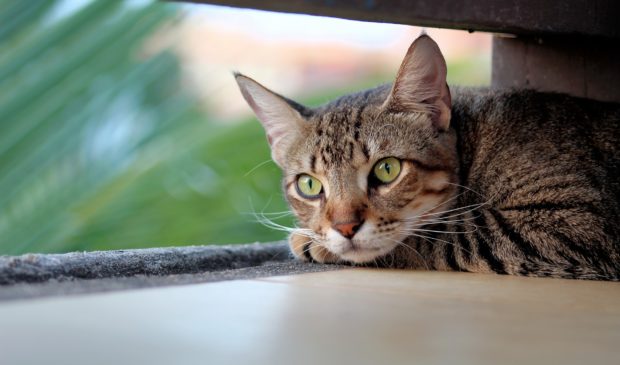Austin cat advocates ask city to reevaluate shelter-neuter-release program
Friday, December 13, 2019 by
Jessi Devenyns The stated goal of the Austin Animal Center is to place all adoptable animals in forever homes. However, even with this intention and a no-kill policy to back it up, not all animals are given the same chance to find a home.
In 2011, the city’s shelter implemented a shelter-neuter-release (SNR) program in conjunction with the Austin Humane Society as an alternative method to secure a live outcome for stray cats. The SNR program is an effort to reduce the number of cats in the shelter and was implemented following the city’s 2010 decision to make Austin a no-kill city, which means that 90 percent of animals who find their way to city shelters come back out alive.
Austin Animal Center’s SNR program is exclusively for homeless cats, also known as community cats, and involves a vet sterilizing, vaccinating, microchipping and then returning the cat to the spot where it was initially discovered. Community cats are defined as those who are found on the street, whether they are feral, lost, or live nearby and are simply roaming their territories.
Only cats who are in good health, older than three months and weigh no less than three pounds are eligible, according to the Animal Center’s website.
“That’s not what no-kill is all about,” shelter volunteer Shelly Leibham said at the Dec. 9 meeting of the Animal Advisory Commission. “That’s just too many cats put back on the street.”
According to final 2019 data from the Austin Animal Center, 966 cats were subject to SNR. Of the total, 331 were kittens.
“There is a 67 percent mortality rate for outdoor kittens under six months,” shelter volunteer Julie Marquis told commissioners, citing the Austin Animal Center’s website. To provide cats who are sent back to the streets a better chance at survival, she requested that the commissioners amend the code section regarding impounded animals to include a provision that the program may not include kittens under six months.
In addition to endangering the lives of kittens, volunteers told commissioners that the program also does not differentiate adequately between feral stray cats and cats who are clearly lost pets.
Volunteers argued that failing to make this distinction can deprive owners of the ability to locate their pets. Shelter policy ensures that lost pets are kept for 72 hours after intake. However, Leibham explained that because cats brought into the shelter for sterilization can be released the next day, the program has the potential to put cats whose owners are actively searching for them back on the streets with no supervision over their post-op health.
Commissioners agreed that the program needed to be reassessed and voted unanimously to form a working group to explore the possibility of amending the shelter’s SNR policies while still ensuring high live outcome rates and controlling community cat populations.
“I think cats present a really tough problem,” Commissioner Craig Nazor said. “There are too many cats out there still breeding.” He suggested social media as a powerful way to reach Austinites and inform them of this ongoing issue and encourage spaying, neutering and keeping track of pets.
Val French told commissioners that another issue worth exploring was the shelter’s data on the program. French, a shelter volunteer, looked through SNR program data from the last six years and found incorrect entries as well as incorrectly referenced data points. She concluded that the state of the data indicates that shelter employees are not regularly or closely tracking the data.
“We do keep specific data on our SNR, and we do it so we can keep up with things too,” Chief Animal Services Officer Don Bland told the Austin Monitor.
The Austin Animal Center’s 2019 data showed that one neonatal kitten was part of the SNR program. Neonatal means a kitten who is less than four weeks old and is ineligible for SNR per the center’s guidelines. Bland told the Monitor that the kitten was actually three months old and came in with a litter that was eligible for the program. The entry into the system was miscoded, he said. The rest of the litter was coded appropriately as kittens.
Cats in the SNR program make up a small percentage of the animals that the city shelter receives. According to data presented to the commissioners, the Austin Animal Center provided a temporary home to more than 18,000 animals this year, and two-thirds were united with a permanent home. One-quarter was transferred to other facilities. The remaining 9 percent were either deceased, disposed of, euthanized, missing or subject to the SNR program.
Commissioners Nancy Nemer, Isabel Mier and Monica Frenden were absent.
The Austin Monitor’s work is made possible by donations from the community. Though our reporting covers donors from time to time, we are careful to keep business and editorial efforts separate while maintaining transparency. A complete list of donors is available here, and our code of ethics is explained here.
You're a community leader
And we’re honored you look to us for serious, in-depth news. You know a strong community needs local and dedicated watchdog reporting. We’re here for you and that won’t change. Now will you take the powerful next step and support our nonprofit news organization?








